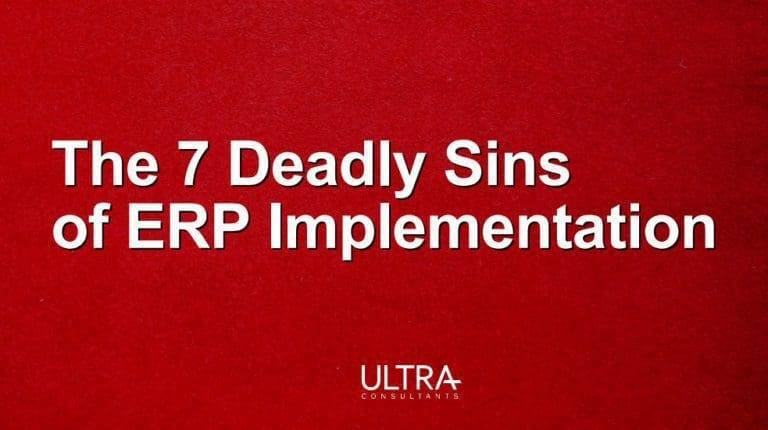Many of the teams we work with ask us how to select an MES system.
We’ve worked with scores of manufacturing companies that seek to gain a competitive advantage through the intelligent use of data.
Key to these efforts is smart evaluation, selection, and implementation of enterprise technology, including Manufacturing Execution Systems (MES).
View this informative highlight from an educational webinar all about MES.

Host Andrew Bolivar, Ultra’s Director of the Center of Excellence, provides advice to manufacturing project teams that are evaluating MES.
As Andrew describes in the webinar highlight, the project team should not jump to a technology demo.
Instead, consider the specific business processes currently running in the organization. A “Current State Analysis” will discover any issues with current processes as related to tracking manufacturing data.
Business process mapping will help an organization discover the Key Performance Indicators that might be missing.
A current and future state analysis is the way to begin selection.
When evaluating MES technology, getting a handle on not only the current state of operations but the desired future state is critical.
How to Select an MES System? Start Here
Andrew suggests looking at the following:
- What is the current state of tracking manufacturing data?
- Where are there gaps in reporting or automation of data?
- When in the current processes are quality inspections needed – can there be improvements in this area even before new technology is needed?
- How is master data managed?
- Are labeling, traceability and other processes in need of optimization?
In short, getting to a granular level as to a current and future state analysis is the way to begin selection. That’s why business process improvement methodologies are so important.

The 7 Deadly Sins of ERP Implementation
Some mistakes are just bad strategic or financial decisions. Some are the inevitable consequence of situational or organizational factors. Some, however, are the result of process-oriented or people-centric choices – and are easily avoided. These are The Seven Deadly Sins of ERP Implementation.
Table of Contents
More ERP material...
Selecting the Right TMS System: Key TMS Features and Trends to Consider
Data analytics holds the ability to highlight inefficient manufacturing processes and enable…
Choosing a CRM System for Your Business
Data analytics holds the ability to highlight inefficient manufacturing processes and enable…
The Undeniable Benefits of Implementing ERP in Food and Beverage Manufacturing
Data analytics holds the ability to highlight inefficient manufacturing processes and enable…



